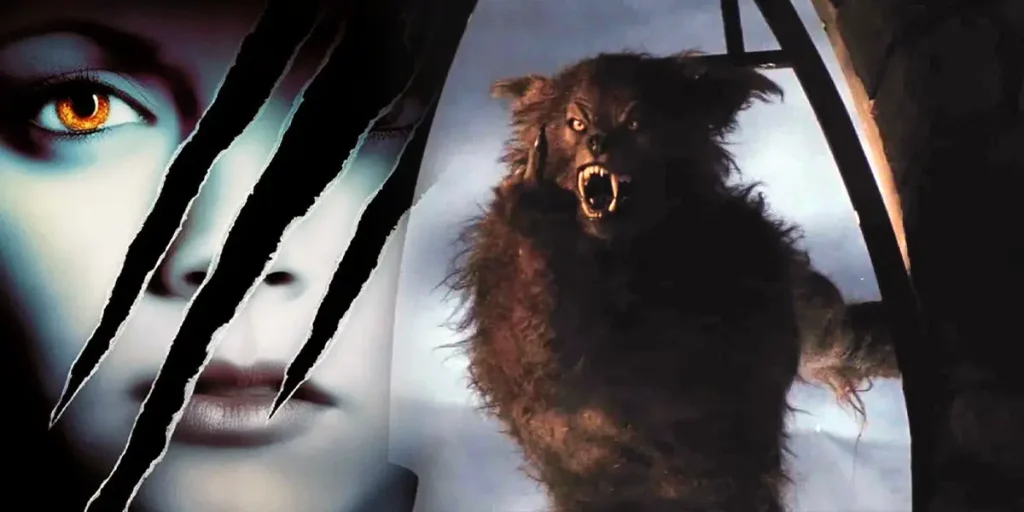Why was Wes Craven’s werewolf movie truly Cursed? Here’s the wild history behind this horror misfire and why fans still howl about it today.
It should have worked. Director Wes Craven and screenwriter Kevin Williamson reunited at the same studio that launched Scream and created a new generation of meta-horror fans for a creature feature with a twist. With effects designed by Oscar-winning makeup artist Rick Baker and a cast of rising stars mingling with familiar genre faces, Cursed was hyped by Dimension Films as a new breed of werewolf movie. It turns out the finished film, when it was finally finished, was more of a mutt than a purebred. Mangled by reshoots, rewrites, and studio meddling, the version of Cursed released on February 25, 2005 barely resembled what its creators intended.
In the hallowed hallways filled with history books of troubled film productions, few stories howl as loudly as that of Cursed. The ‘Who’s the Werewolf’ thriller starring Christina Ricci and Jesse Eisenberg has become infamous for its chaotic production, which saw its cast change numerous times over its lengthy shoot. When I first saw Cursed on opening day (once a Wes Craven fan, always a Wes Craven fan), I remember being massively disappointed in the theater, but over time, through home viewings, I’ve grown to appreciate what was able to make it onto the screen. As a longtime defender of this misunderstood gem, I’ve gathered the complete, fascinating story of how Cursed became, well… cursed.
A New Nightmare Begins: Why Cursed Started with Scream-Worthy Promise
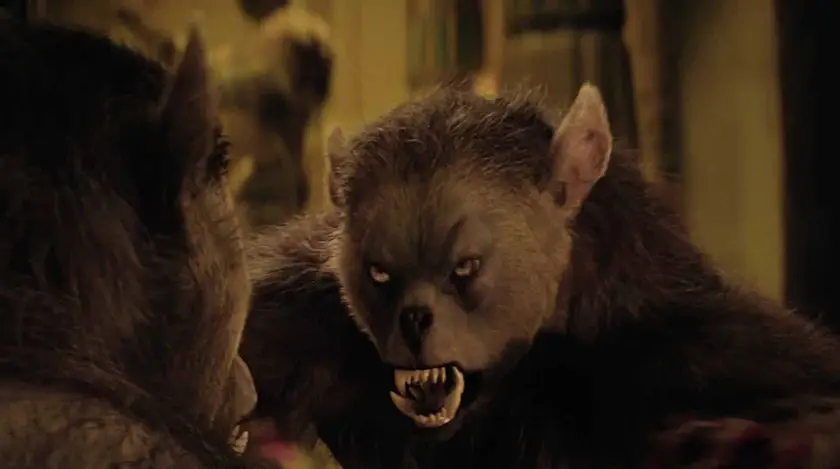
The roots of Cursed stretch back to 2000, when Kevin Williamson, riding high from his Scream success, penned a werewolf tale meant to turn the genre on its head. This first draft followed a New York City serial killer who discovers his murderous urges stem from his lycanthropic nature. Arguably, this sounds more like a pitch than a fleshed-out idea, and the original concept would undergo significant transformations over the years. However, the core vision of a modern werewolf with a calculated agenda remained on Williamson’s mind.
Two years later, in October of 2002, the now-disgraced Miramax executive and Dimension Films co-founder Bob Weinstein predicted that, with Wes Craven on board to direct Williamson’s script, Cursed would reinvigorate the werewolf genre. Given an almost laughably optimistic release date in August 2003, considering what was to come, no one bothered to tell Craven this was being added to his slate. Craven was in the final pre-production stages for a different project called Pulse when Weinstein abruptly pulled the movie from the schedule ten days before shooting started, all but forcing the veteran director to move on to Cursed. Rumor has it that Craven negotiated for double his usual rate, but since he wound up shooting the film nearly three times over, the studio got him for a bargain.
Casting Call on Elm Street: Assembling Horror Royalty for Cursed

Wes Craven’s clout with the Scream franchise attracted fresh-faced young talent, and the cast for Cursed was stacked. Fresh off his success in the critically acclaimed Roger Dodger, Jesse Eisenberg was the first person to be cast, followed by Ricci as Ellie Harper, an associate producer on The Late Late Show with Craig Kilborn, Scott Foley as Ellie’s boyfriend Kyle, and Omar Epps as animal control chief Ben Taft.
Skeet Ulrich, working again with Craven after playing killer Billy Loomis in Scream, took the role of Vince Winston, the black sheep of a wealthy family bitten by a werewolf. The supporting cast was rounded out with an impressive mix from the old and new Hollywood Hot List: Milo Ventimiglia, James Brolin, Shannon Elizabeth, Illeana Douglas, Robert Forster, Scott Baio (playing himself), Corey Feldman, Mandy Moore, John C. McGinley, and Craven’s original A Nightmare on Elm Street star, Heather Langenkamp.
Even now, this assembled list remains an enticing reminder of what could have been if Cursed had remained on its original trajectory. Filming was about to begin, though, and that’s when things got weird.
Last House on Production Lane: When Wes Craven’s Movie Hit Its First Dead End
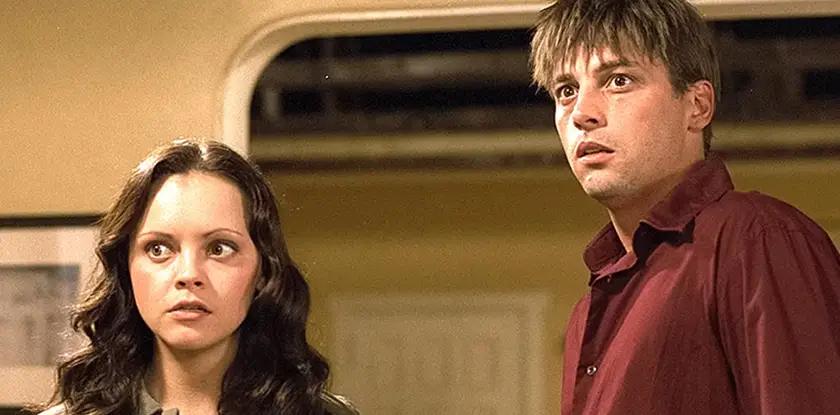
With a budget of $35 million and an ambitious 15-week shooting schedule around the Los Angeles area, principal photography on Cursed began on March 17, 2003. Cast and crew were spotted at various locations you can easily pick out from countless other CA-set movies, including Torrance High School (famous as the filming location for Buffy the Vampire Slayer and Beverly Hills, 90210), Verdugo Hills High School, The Bel Age Hotel, Mulholland Drive, and the Santa Monica Pier. Behind-the-scenes footage from Entertainment Tonight showed Ulrich and Ricci shooting sequences near the pier and outside the residence chosen to be Ellie’s house. In Mandy Moore’s opening scene (a Kevin Williamson/Wes Craven staple at this point), singer and drummer Sheila E. even appeared as herself, playing with her band at a costume ball for PETA.
From the outside, the shoot seemed to be progressing normally. Then, after 54 days of filming with only about six days left to shoot the climactic confrontation at the Hollywood Wax Museum, Dimension Films decided the third act needed reworking. Specifically, Weinstein and his executives were unhappy with the scripted finale and the progression of the special effects, including the appearance of the most important character: its werewolf.
In the middle of creating transformative werewolf effects, Baker was denied time to finish, though he tried to bargain with Weinstein to let his team finish so they had something to work with once production started back up. Weinstein turned him down and eventually replaced Baker and his award-winning team with a new effects group.
Movies are often edited while filmed to reduce costs and time delays. At this point, editor Patrick Lussier had assembled nearly 90 minutes of footage from what had been shot. While it lacked the finale, it was, by all accounts, a complete film, including the score and visual effects. This version would come to be known in fan circles as the elusive ‘Craven Cut.’
The Hills Have Rewrites: Why This Werewolf Movie Got Butchered
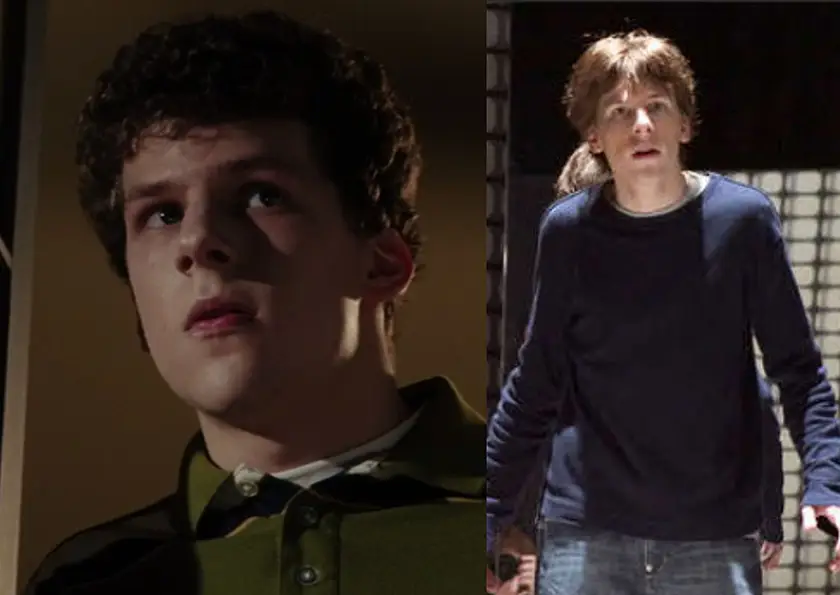
From there, Cursed entered true development hell. During a five-month period, when the cast and filmmakers were kept in flux, creatives put their corporate heads together to determine how to fix their costly investment. They could shoot the ending as written and take their chances, or rewrite the script in a way that could save as much of the already filmed footage as possible. Long having strayed from Kevin Williamson’s NYC serial killer idea, Wes Craven had shot a movie about three strangers (Ricci, Eisenberg, and Ulrich) who meet at the scene of a late-night car accident where one gets nipped by a werewolf.
The studio brought Sean Hood and Tony Gayton to do a major rewrite that fundamentally altered this story. The 2.0 version made Ricci and Eisenberg siblings and changed Ulrich’s character into Ricci’s boyfriend, giving him a new name in the process. When the production finally resumed in November, the cast looked substantially different, and Ulrich had dropped out, dissatisfied with the new direction of his character, and was replaced by Joshua Jackson.
Other cast changes included Portia De Rossi replacing Illeana Douglas as fortune teller Zela, Michael Rosenbaum replacing Scott Foley as Kyle (who was no longer her boyfriend but assistant), and singer Mýa replacing Mandy Moore as Jenny. Lance Bass also joined for a cameo appearance. If they weren’t replaced, many original cast members found their characters written out entirely, including Brolin, Forster, Feldman, Epps, and McGinley. Even Langenkamp didn’t make the cut, which was a surprising move because she’d always seemed like such a good luck charm for Craven.
The special effects also underwent a complete overhaul. With Baker no longer involved, KNB EFX Group took over the makeup effects, though ultimately, most of their practical work would be replaced by laughably bad CGI in post-production. Of the original 90 minutes of footage Lussier had cut together, only around 12 would be used in the new version. If you want to spot this footage, all you have to do is look at Eisenberg, or rather, his hair. In the original version, his curly hair is coiffed nicely, but he wears a goofy flat-ironed wig in the reshot footage. The way Cursed is edited, Eisenberg will exit one room with his old hair and re-enter with the new hair.
Freddy’s Revenge on the Budget: How Cursed Became a Never-Ending Nightmare

The extensive reshoot wrapped in January 2004, featuring a new ending that reportedly tested high with audiences eager to see the new Wes Craven horror flick. However, Dimension Films still wasn’t satisfied enough to release Cursed as-is and demanded further changes.
“The crazy part is that after we filmed the whole second version of the film, we had to go back for a third reshoot, which lasted about 20 days,” Eisenberg later recalled in an interview with Trace Thurman on Bloody Disgusting. “That’s like the length of an independent movie. And then we had to go back a fourth time for like 10 days, and they made shirts that said ‘Cursed 4: Back for More.’”
During these endless reshoots, the budget reportedly ballooned from $35 million to somewhere between $70-100 million. Despite being hired to work on the Cursed for only six weeks in the summer of 2003, editor Lussier worked on it for 19 months and even served as a second unit director during the extensive reshoots. Finally, in what may have been the most controversial decision of all for Dimension Films, in late fall 2004, the studio recut the film from an R down to a PG-13 in hopes of reaching a wider audience. Removing much of Cursed ’s gore and more intense scenes was done without Craven’s involvement, something the director rightfully considered an impolite action toward not just him but the cast and creators contracted to make an R-rated film.
Scream Queens and Box Office Kings: Why Wes Craven’s Werewolf Movie Flopped
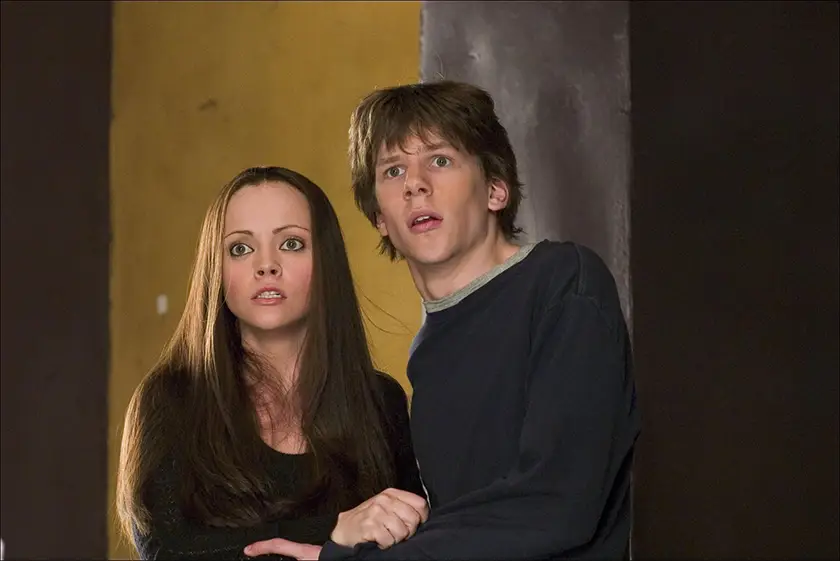
I can remember the release date on Cursed being moved several times, even catching an announcement in the Sunday paper that it was opening on Friday, only to find it had been moved at the last minute. After nearly two years in production and post-production limbo, Cursed finally staggered into theaters on February 25, 2005, a shell of what it could have been. Audiences ignored it, and it became a certified box-office bomb, making less than $30 million globally, a disastrous number considering its inflated budget. Critics eviscerated it, with many reviewing the film as a disjointed mess that failed to deliver genuine scares or a coherent story.
The cast members who endured the prolonged production shared similar sentiments. In 2014 Judy Greer candidly told Buzzfeed: “I don’t know why that movie got so f*ed up. I don’t understand it. I thought the script was fine. Honest to God, I didn’t get the big deal. I don’t know who kept making them fk with it. Then we shot the movie for, like, seven years. I think they said we had four movies worth of footage. It was so fun but so weird.”
Ricci was equally blunt in a 2018 interview with The AV Club: “It was one of those studio movies that just got horribly screwed up.”
In that same interview cited above with Bloody Disgusting, Eisenberg offered perhaps the most perceptive reflection in light of the revelations to come involving Miramax and the Weinsteins: “The first movie was more interesting and provocative. I don’t know why it wasn’t working. Now that we know the behind-the-scenes of the Weinstein company, it makes sense as to why it was so chaotic.”
The Deleted Footage Under the Movie Studio Stairs: Cursed’s Hidden History
Despite its troubled release to theaters and home video, Cursed has developed something of an underground cult following over the past twenty years. Some of this is due to the now widespread knowledge that multiple, possibly superior versions of the film exist somewhere in someone’s air-tight safe. Former Dimension COO Cary Blanat confirmed that the original (and deleted) footage from the Cursed shoot still exists. Lussier has talked about possessing three unreleased versions: Craven’s unfinished original cut, the first reshot version, and a fully uncut reshot version with all the deleted gore and practical effects from KNB FX before most of their work was replaced with CGI. In 2021, horror site Screamfest compared the surviving footage to the theatrical version and found the lost cuts far superior.
Similarly to how fans successfully campaigned for the Snyder Cut of Justice League, there have been growing calls among horror aficionados for the release of the Craven Cut. The idea that somewhere, in a vault, lies Wes Craven’s true vision for Cursed continues to torment fans of the director’s work, especially following his passing in 2015. A few years back, boutique physical media label Shout Factory released the unrated director’s cut of Cursed as a Collector’s Edition. While this wasn’t any of the versions mentioned above, it was a tantalizing teaser of what could someday see the light of day.
My Soul to Take (Another Look): Why This Werewolf Movie Deserves a Second Chance

While many view Cursed as a low point in Wes Craven’s illustrious career, the film has its defenders who appreciate its campy charm, campier performances, and fleeting glimpses of what could have been a truly innovative addition to werewolf mythology. Today, Cursed exists in a kind of purgatory. It’s not a cult classic, but it’s not a total disaster, either. It’s a cautionary tale about artistic compromise and how even horror royalty can be chewed up by the Hollywood machine.
But maybe that’s what makes Cursed so watchable. The film retains some of Williamson’s trademark sharp dialogue, particularly in scenes between Ricci and Eisenberg, whose performances remain committed despite the chaotic production. A few gags, even the infamous werewolf middle finger, hit with weird charm. Moments of classic Craven tension occasionally break through, suggesting the stronger film that might have existed without so much interference. I dare you not to feel your pulse race just a little bit when Shannon Elizabeth finds herself stuck in an overturned car stalked by a hairy beast she can’t see, or during Mýa’s freaky fight for her life in a parking garage. These are well-done, nail-biting moments that rival the director’s best work, and unfortunately they are crammed into a film so thoroughly messed with.
For those of us with a soft spot for Cursed, part of its appeal lies in viewing it as a curiously sincere artifact of early 2000s horror. Putting a lot of distance between 2005 and today has allowed it to become a movie that, much like its lycanthropic subject matter, transforms into something new when viewed through the lens of its troubled production history.
Perhaps someday, we’ll see the version Wes Craven and Kevin Williamson originally envisioned. (#ReleaseTheCravenCut) The bones of a better film are still there, just buried beneath bad CGI and the embarrassing wigs Eisenberg is forced to wear. Until then, this messy misfit werewolf movie gets by on our enduring fascination with both the movie itself and its legendary director’s body of work.

